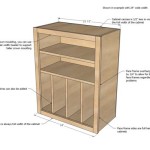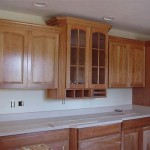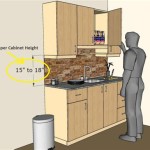What Size Is A Standard Kitchen Drawer?
Determining the standard size of a kitchen drawer isn't as straightforward as one might initially assume. While there are common dimensions, the "standard" size can vary depending on several factors, including the cabinet manufacturer, the style of cabinetry, and the intended purpose of the drawer itself. Understanding these factors is crucial for kitchen design, renovation, and even simple tasks like purchasing drawer organizers.
The kitchen, as the heart of the home, requires thoughtful planning when it comes to storage solutions. Drawers are an integral part of that storage strategy, offering easy access and organization for a diverse range of items, from cutlery and cookware to food storage containers and even small appliances. Therefore, knowing the typical dimensions of kitchen drawers is essential for maximizing space and functionality.
This article will explore the nuances of kitchen drawer sizes, examining the typical dimensions for various types of drawers and considering the factors that influence those dimensions. This information will equip homeowners, designers, and contractors with the knowledge necessary to make informed decisions about kitchen cabinetry and drawer design.
Understanding Common Kitchen Drawer Dimensions
While the concept of a single "standard" size is somewhat of an oversimplification, there are dimensions that are commonly used in kitchen cabinet construction. These common sizes provide a useful baseline for planning and design. It is important to always confirm exact measurements from your chosen cabinet supplier or manufacturer.
In terms of width, kitchen drawers typically range from 12 inches to 36 inches. Common widths include 12, 15, 18, 24, 30, and 36 inches. The specific width chosen will depend on the overall width of the base cabinet and the desired configuration of drawers within that cabinet. For example, a 36-inch wide base cabinet might accommodate two 18-inch wide drawers or a single 36-inch wide drawer. The design choices depend largely on the intended use of the space.
The depth of kitchen drawers, which refers to the distance from the front to the back of the drawer, is often determined by the depth of the base cabinet itself. Standard base cabinet depth is typically 24 inches. Therefore, drawer depths often range from 20 to 22 inches to allow for clearance within the cabinet and space for drawer slides and mechanisms. Shorter drawer depths might be used in situations where plumbing or other obstructions are present behind the cabinet.
Drawer height is arguably the dimension with the most variability, as it is directly related to the intended purpose of the drawer. Shallow drawers, often referred to as utensil drawers or cutlery drawers, typically range from 3 to 4 inches in height. These drawers are ideal for storing flatware, utensils, and other small items. Medium-height drawers, ranging from 5 to 7 inches, are commonly used for storing cookware, food storage containers, and other medium-sized items. Deep drawers, exceeding 8 inches in height, are often used for storing pots, pans, and even small appliances like blenders or food processors. The need for deep drawers will affect the overall design of the cabinetry to accommodate the larger size.
It's important to note that these dimensions refer to the external dimensions of the drawer box. The internal dimensions, which represent the actual usable space within the drawer, will be slightly smaller due to the thickness of the drawer box materials, typically around ½ to ¾ inch per side.
Moreover, custom cabinetry offers even greater flexibility in terms of drawer dimensions. With custom cabinets, homeowners can specify the exact width, depth, and height of each drawer to perfectly suit their storage needs and preferences. This allows for a truly personalized kitchen design that maximizes space and functionality.
Factors Influencing Kitchen Drawer Sizes
Several factors influence the size and configuration of kitchen drawers. Understanding these factors is key to designing a kitchen that is both functional and aesthetically pleasing.
The overall size and layout of the kitchen itself is a primary consideration. Smaller kitchens may necessitate smaller drawers and more efficient use of space. Larger kitchens, on the other hand, may allow for larger drawers and more flexibility in design. The location of appliances, such as the dishwasher or range, can also impact drawer placement and size.
The style of cabinetry, whether it's traditional, modern, or transitional, can also influence drawer dimensions. For example, frameless cabinets, also known as European-style cabinets, typically offer more interior space than framed cabinets. This is because frameless cabinets lack the face frame that surrounds the cabinet opening in framed cabinets, allowing for slightly wider drawers. The lack of a central stile in frameless base cabinets also opens up more design possibilities.
The intended use of the drawer is another crucial factor. As mentioned earlier, different types of items require different drawer heights. Drawers intended for storing heavy pots and pans should be constructed with sturdier materials and more robust drawer slides to support the added weight. Drawers intended for storing delicate items, such as fine china or glassware, may benefit from dividers or drawer liners to prevent damage. The drawer's primary function should be considered early in the planning phases.
Building codes and accessibility requirements can also impact drawer design. For example, the Americans with Disabilities Act (ADA) specifies guidelines for kitchen design that promote accessibility for individuals with disabilities. These guidelines may mandate specific drawer heights and clearances to ensure ease of use for all users. It's important to consult with a qualified professional to ensure that kitchen design complies with all applicable codes and regulations.
The type of drawer slides used also plays a role in determining the practical dimensions of a drawer. Full-extension drawer slides allow the drawer to be pulled out completely, providing full access to all items stored inside. Partial-extension drawer slides, on the other hand, only allow the drawer to be pulled out partially, which may limit access to items stored in the back of the drawer. The type of drawer slide selected will impact the usable depth of the drawer and the overall functionality of the space.
Specific Drawer Types and Their Typical Dimensions
Beyond the broad classifications of shallow, medium, and deep drawers, there are specific types of kitchen drawers designed for particular purposes, each with its own typical dimensions.
Cutlery drawers, as the name suggests, are designed for storing flatware and silverware. These drawers are typically shallow, ranging from 2 to 3 inches in height. They often feature dividers or inserts to keep utensils neatly organized and prevent them from shifting around. The width and depth of cutlery drawers will vary depending on the size of the cabinet and the number of utensils to be stored.
Utensil drawers are similar to cutlery drawers but are designed for storing larger cooking utensils, such as spatulas, whisks, and serving spoons. These drawers are typically slightly taller than cutlery drawers, ranging from 3 to 4 inches in height. They may also feature dividers or inserts to keep utensils organized.
Pot and pan drawers are designed for storing heavy cookware, such as pots, pans, and skillets. These drawers are typically deep, ranging from 8 to 12 inches in height. They are often constructed with reinforced bottoms and heavy-duty drawer slides to support the weight of the cookware. They may also feature adjustable dividers or organizers to keep pots and pans from nesting together and scratching.
Spice drawers are designed for storing spices and herbs. These drawers are typically narrow and shallow, ranging from 6 to 12 inches in width and 3 to 4 inches in height. They often feature tiered inserts or racks to allow for easy visibility and access to spices. Spice drawers are often located near the cooktop or prep area for convenience.
Pantry drawers are designed for storing dry goods, such as rice, pasta, and cereal. These drawers can vary in size depending on the available space and the amount of storage needed. They are often located in the pantry cabinet or a dedicated pantry area. Deeper pantry drawers might be used to store larger items such as bags of flour or sugar.
Pull-out shelves, while technically not drawers, often serve a similar function and are worth considering in kitchen design. These shelves pull out from the cabinet, providing easy access to items stored in the back. They are often used for storing pots, pans, and small appliances. The dimensions of pull-out shelves will vary depending on the size of the cabinet.
Waste and recycling drawers, are designed to conceal waste and recycling bins. These drawers are typically located under the sink or in a convenient location near the prep area. They are often custom-built to accommodate specific-sized bins. These drawers contribute to a cleaner and more organized kitchen aesthetic.
Ultimately, the "standard" size of a kitchen drawer is a flexible concept that depends on a variety of factors. Careful consideration of these factors, along with precise measurements and attention to detail, is essential for creating a kitchen that is both functional and visually appealing.

Cabinet Sizes Blok Designs Ltd

Image Result For Kitchen Drawer Size Drawers Cabinet Cabinets Height

Base Cabinet Size Chart Builders Surplus

Cabinet Face Dimensions

When Is A Drawer Too Wide Or Big

2024 Kitchen Cabinet Drawer Dimensions Counter Top Ideas Check More At H Sizes Drawers Standard

Proper Depth For Frameless Cabinets Kitchen Base Cabinet Drawers Drawing

Kitchen Cabinet Sizes What Are Standard Dimensions Of Cabinets

Kitchen Base Cabinet Size Chart Builders Surplus Cabinets Sizes Drawers

600mm 2 1 Pan Drawer Base Unit Dimensions
Related Posts








